
by Therese Horvat
Special to The Leaven
Words of an old spiritual pose a soul-searching question to consider this Lent: “Were you there when they crucified my Lord?”
Making the Stations of the Cross is a prayerful opportunity to walk the holy path to Calvary with Jesus and to relive his passion, death and resurrection. This spiritual pilgrimage draws us into the mystery of Jesus’ self-giving sacrifice and God’s merciful love.
Not an easy journey
Accomplishing this salvific role wasn’t easy for Jesus. He knew that suffering would be part of his life story. He tells his apostles that he will suffer greatly and be killed (Mt 16:21).
In the Garden of Gethsemane, Our Lord asks the Father to let this cup pass from him. But then, Jesus affirms that he will do the Father’s will and not his own. And the story unfolds.
The people opt to free Barabbas, a notorious prisoner, and instead choose crucifixion for Jesus. They mock Jesus, spit on him, crown him with thorns, make him walk the hill of Calvary in front of God and country and his mother Mary and some faithful followers. They strip him of his garments after he falls three times. And then, they nail him to the cross, crucifying him and letting him die. All acts prayerfully commemorated in different Stations of the Cross.
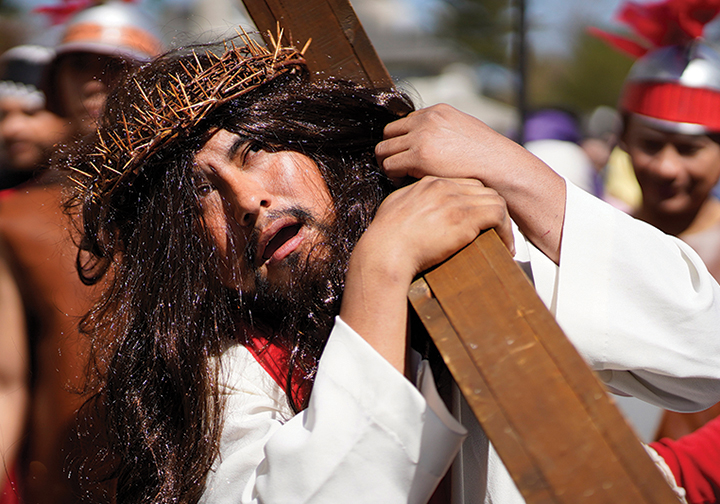
On Good Friday of the 2000 Holy Year, while leading the Stations of the Cross, Pope John Paul II said, “The moment that Jesus of Nazareth took up the cross in order to carry it to Calvary marked a turning point in the history of the cross. The symbol of a shameful death, reserved for the lowest classes, the cross becomes a key. From now on, with the help of this key, man will open the door of the deepest mystery of God. Through Christ’s acceptance of the cross, the instrument of his own self-emptying, men [and women] will come to know that God is love. Love without limits.”
With the Stations of the Cross, we journey with Jesus one step closer to the fulfillment of God’s plan of salvation. In our brokenness, failures, sinfulness and human imperfections, we recognize that we have a role in the drama of Christ’s passion. Jesus suffered and died painfully and willingly for each one of us. He did this to atone for our sins, failures and missteps. This should make walking the holy path to Calvary all the more real and personal. This should make us want to be among those who accompany Jesus on the way to the cross.
Companions on the journey
There are brave, valiant, compassionate, reluctant and unexpected persons identified in Scripture and/or the Stations of the Cross as accompanying Jesus on his journey to Calvary and immediately following.
As recounted in the Fourth Station, Jesus meets Mary, his mother. Simeon had prophesied that a sword would pierce her heart in many ways (Lk 2:35), but could Mary even begin to fathom the extent of the agony leading to the cross?

On the path to Calvary, Mary is a sorrowful mother. She witnesses the scorn her son endures. She must suffer intensely with Jesus on this journey. She may not understand how this fits into God’s plan, but she remains a faithful disciple as she follows in her son’s footsteps physically one last time.
Others extend compassion to Jesus on the path to Calvary. Just as many were drawn to him during his three-year ministry, Jesus attracts followers as he struggles up the hill.
Simon of Cyrene may have been “pressed” into service, but he clearly rises to the occasion and responds to the call to help Jesus carry his cross. Both Pope John Paul II and Pope Benedict XVI describe Simon’s experience as a grace and gift. Pope John Paul notes that carrying the cross with a convict could be considered an act offensive to the dignity of a free man.
Yet, from the perspective of redemption, Simon has a share in the Son of God’s work of salvation. He gives Jesus some relief just as we are called to do by helping others bear their crosses and in their times of need, even when it is not convenient for us.
A microcosm of his ministry
Throughout his ministry, Jesus seems to attract and serve a somewhat motley cast of characters. It’s almost as if he encounters a microcosm of them on the road to Calvary. In meeting and reaching out to people, he respects and elevates their dignity just as he did in his life and interactions. He makes each person he meets feel special — because in the eyes of God, they and we are. And consistent with his message after washing the feet of his apostles, Jesus also allows others to serve him on his journey to the cross.
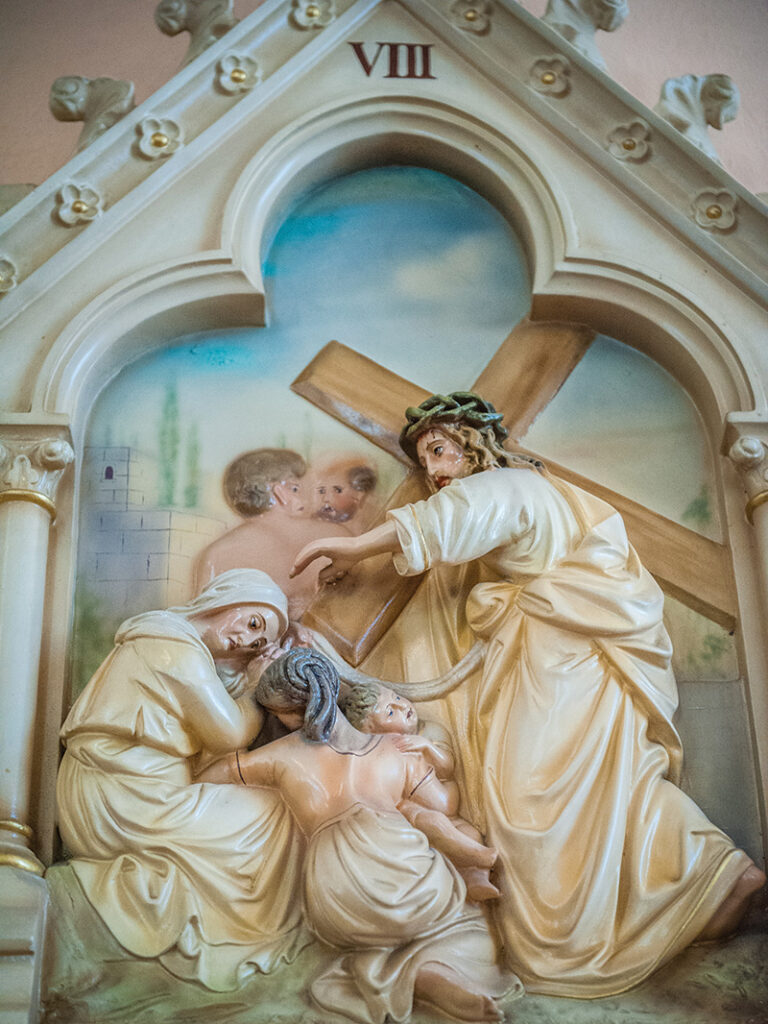
In the Sixth Station, Veronica emerges from the bystanders and wipes Jesus’ face. While this account is legendary and not documented in Scripture, the story is very moving. Wiping away the blood, sweat and grime, Veronica performs an act of mercy. Her kindness is rewarded with the image of Jesus’ face that remains imprinted on the cloth. Acts of love do not pass away — they make lasting imprints on the hearts of other people, said Pope John Paul II on Good Friday 2000.
In his book, “Conspiracy of Compassion,” Father Joe Nassal, CPPS, tells of a woman he befriended in his parish ministry. Her son had been killed in a car accident caused by a drunk driver. Even with the passage of time, the woman suffered from this loss. However, she and her husband “drew upon their suffering to help others who experienced the death of a loved one” (page 24).
A few years later, Father Joe’s brother Ed died by suicide in the basement of their parents’ home. Upon learning this, the woman and her husband drove 300 miles to be with Father Joe and his family the morning after Ed’s death. They didn’t stay long. They didn’t have to. The couple ushered in what Father Joe calls a “conspiracy of compassion” — like Mary, Simon and Veronica on the way to Calvary.
So, too, every act of kindness, compassion and love allows us to radiate Christ in the world and leave imprints on the hearts of those we encounter. The final lines of “Radiating Christ,” a prayer-poem by St. John Henry Newman, conveys this message:
“Let me thus praise You
in the way in which You love best:
by shining on those around me.
Let me preach You without preaching,
not by words but by my example,
by the catching force,
the sympathetic influence of what I do,
the evident fullness of the love
my heart bears for You. Amen.”
Mercy, forgiveness abound
The Eighth Station commemorates a group of women of Jerusalem who are weeping for Jesus. Earlier in the Gospels and aware of the city’s coming destruction, Jesus weeps over the city. On the path to Calvary, he tells the women not to weep for him but for their children as they face the challenging days ahead.
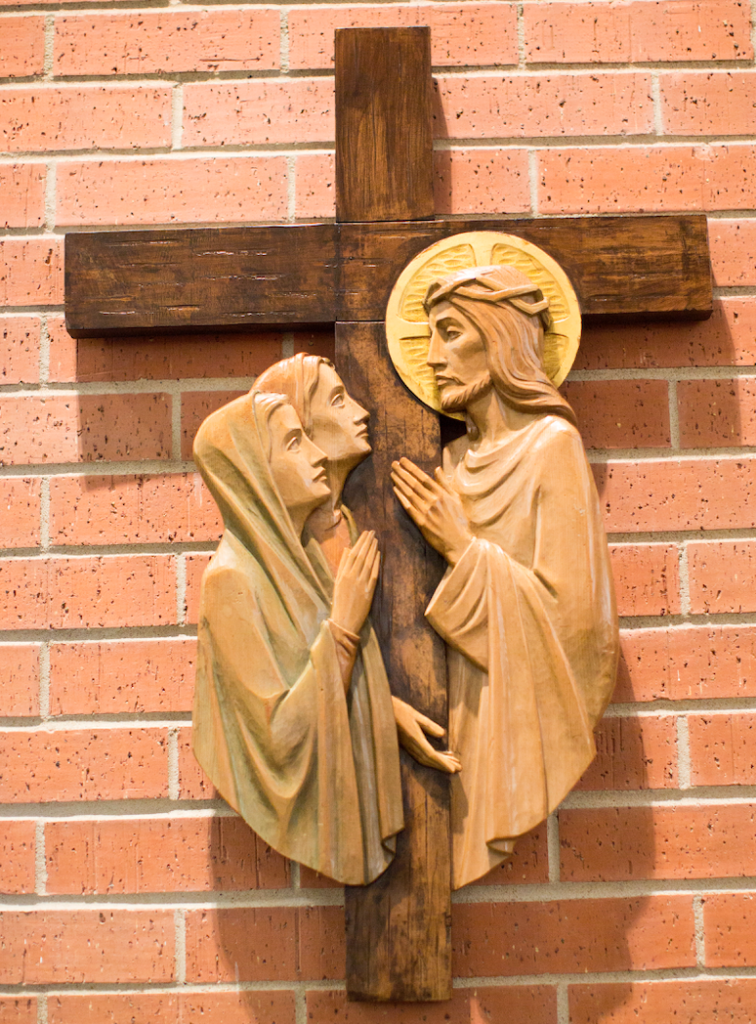
While the traditional Way of the Cross doesn’t call special attention to the good thief (Lk 23:40-43), the biblical Stations of the Cross introduced by Pope John Paul II include this incredible experience of divine mercy. Crucified next to Jesus, the good thief defends Our Lord from the taunts of the unrepentant man hanging nearby on another cross. The good thief requests and receives forgiveness and the promise of paradise.
Last year during Lent, The Leaven featured an article based on this biblical account. One of the persons interviewed reflected, “With Jesus, I always have the opportunity for forgiveness. When things look impossible, Jesus makes them possible. He gives the good thief direct knowledge that not tomorrow, not the next day, but that today, he will be with Jesus in paradise. The good thief dies in peace.” God’s mercy truly abounds.
John’s Gospel (19:25-27) tells us that the people closest to Jesus stand at the foot of the cross to the bitter end: Jesus’ mother and his mother’s sister, Mary the wife of Clopas, Mary Magdalene, and the beloved disciple himself. In his words to the beloved disciple — “Behold, your mother” — Jesus professes Mary’s significance and intermediary role as mother of all of us.
When darkness descends and Jesus commends his spirit and dies, some onlookers unexpectedly offer their perspectives. Luke describes the centurion who glorifies God and proclaims, “This man was innocent beyond doubt” (23:47). In Matthew’s account, the centurion and men with him acknowledge, “Truly, this was the Son of God” (27:54). Even in his death on Calvary, Jesus evangelizes and transforms people’s lives.
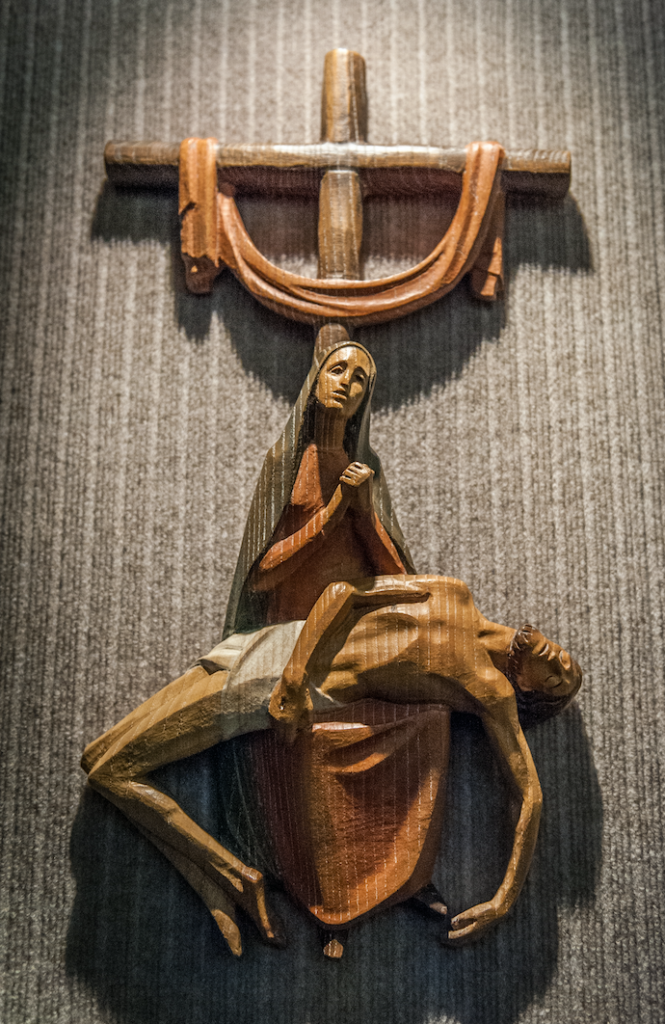
The Thirteenth Station commemorates Jesus being taken down from the cross. Traditionally, he is then placed in the arms of his mother — the poignant scene that’s been memorialized as the Pietà. Pope John Paul II writes that the Gospels say nothing of what Mary felt at that moment — that maybe the evangelists wanted to respect her grief and her memories, or they weren’t capable of conveying her feelings.
The Fourteenth Station portrays Joseph of Arimathea who boldly steps forward to accept the body of Jesus for burial. He agrees to bury him honorably in a new tomb. Nicodemus brings an abundant supply of myrrh and aloes with which to anoint Jesus.
‘Were you there?’
What’s as curious as who walks the path to Calvary with Jesus or interacts with him is who isn’t mentioned as accompanying him. Who’s not there? Would we have been there? Would we have had the commitment and courage to be on the record and on the front line as followers of Jesus in the face of opposition by the Romans, the Jewish leaders and seemingly popular opinion?
Returning to the old spiritual, we can ask ourselves, “Were you there when they crucified my Lord?” This question should indeed cause us to wonder — wonder at the awe and mystery of God’s saving grace; rejoice that God’s love is boundless; and realize that remaining steadfast in the company of Jesus holds the promise of salvation.
From the sorrow and ignominy of the Way of the Cross, God’s loving mercy shines through. Love begets love in the Stations of the Cross. Good people step forward out of their concern and with compassion.
We believe that this love does not end on Calvary. If anything, love overflows and inundates the world in the sacrificial offering of Jesus on the cross. The good news of salvation rings through and true on Easter Sunday. We may be in Lent now, but the story of salvation goes well beyond these 40 days to Jesus’ resurrection and then to the solemnity of Pentecost and then on to eternity.
The Stations of the Cross became more complete with Pope John Paul II’s addition of the Resurrection as the Fifteenth Station. Beyond the ignominy of the walk to Calvary and his death on the cross, Jesus rises from the dead and conquers sin and death with divine love and mercy.
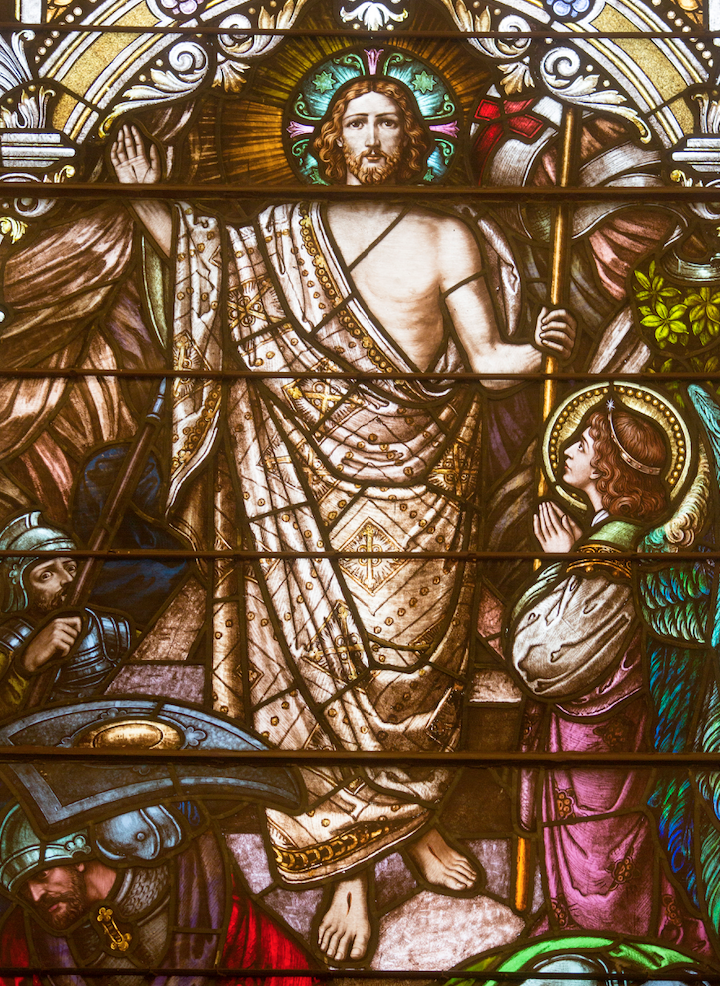
With and in Christ we, too, can rise from the depth of what ails our weakened humanity and strive to live as Jesus did in our interactions with others, in our spiritual life, in our work for justice. We can radiate the face and voice and hands of Jesus in the world. We must be his face and voice and hands to be true to the legacy of the cross and the promise of the Resurrection.
What’s important is that we remain open to accepting God’s loving mercy. His saving, amazing grace is always there for us in the Eucharist, in the sacrament of reconciliation, through the Spirit who guides us and in the loving presence of other people.
Content based on the Lenten Day of Reflection Horvat gave recently through Marillac Center, the retreat and spirituality center of the Sisters of Charity of Leavenworth.






